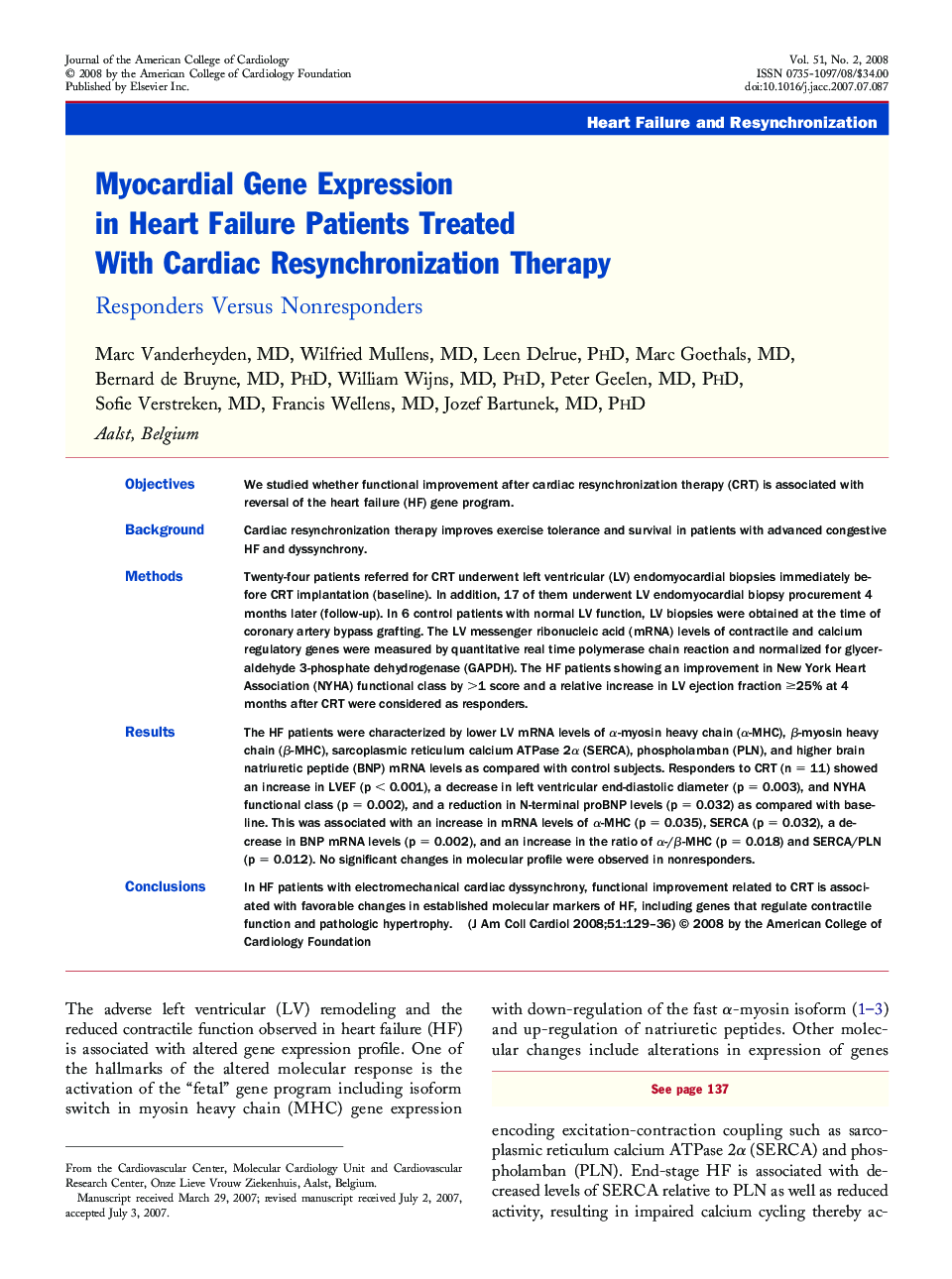| Article ID | Journal | Published Year | Pages | File Type |
|---|---|---|---|---|
| 2954352 | Journal of the American College of Cardiology | 2008 | 8 Pages |
ObjectivesWe studied whether functional improvement after cardiac resynchronization therapy (CRT) is associated with reversal of the heart failure (HF) gene program.BackgroundCardiac resynchronization therapy improves exercise tolerance and survival in patients with advanced congestive HF and dyssynchrony.MethodsTwenty-four patients referred for CRT underwent left ventricular (LV) endomyocardial biopsies immediately before CRT implantation (baseline). In addition, 17 of them underwent LV endomyocardial biopsy procurement 4 months later (follow-up). In 6 control patients with normal LV function, LV biopsies were obtained at the time of coronary artery bypass grafting. The LV messenger ribonucleic acid (mRNA) levels of contractile and calcium regulatory genes were measured by quantitative real time polymerase chain reaction and normalized for glyceraldehyde 3-phosphate dehydrogenase (GAPDH). The HF patients showing an improvement in New York Heart Association (NYHA) functional class by >1 score and a relative increase in LV ejection fraction ≥25% at 4 months after CRT were considered as responders.ResultsThe HF patients were characterized by lower LV mRNA levels of α-myosin heavy chain (α-MHC), β-myosin heavy chain (β-MHC), sarcoplasmic reticulum calcium ATPase 2α (SERCA), phospholamban (PLN), and higher brain natriuretic peptide (BNP) mRNA levels as compared with control subjects. Responders to CRT (n = 11) showed an increase in LVEF (p < 0.001), a decrease in left ventricular end-diastolic diameter (p = 0.003), and NYHA functional class (p = 0.002), and a reduction in N-terminal proBNP levels (p = 0.032) as compared with baseline. This was associated with an increase in mRNA levels of α-MHC (p = 0.035), SERCA (p = 0.032), a decrease in BNP mRNA levels (p = 0.002), and an increase in the ratio of α-/β-MHC (p = 0.018) and SERCA/PLN (p = 0.012). No significant changes in molecular profile were observed in nonresponders.ConclusionsIn HF patients with electromechanical cardiac dyssynchrony, functional improvement related to CRT is associated with favorable changes in established molecular markers of HF, including genes that regulate contractile function and pathologic hypertrophy.
